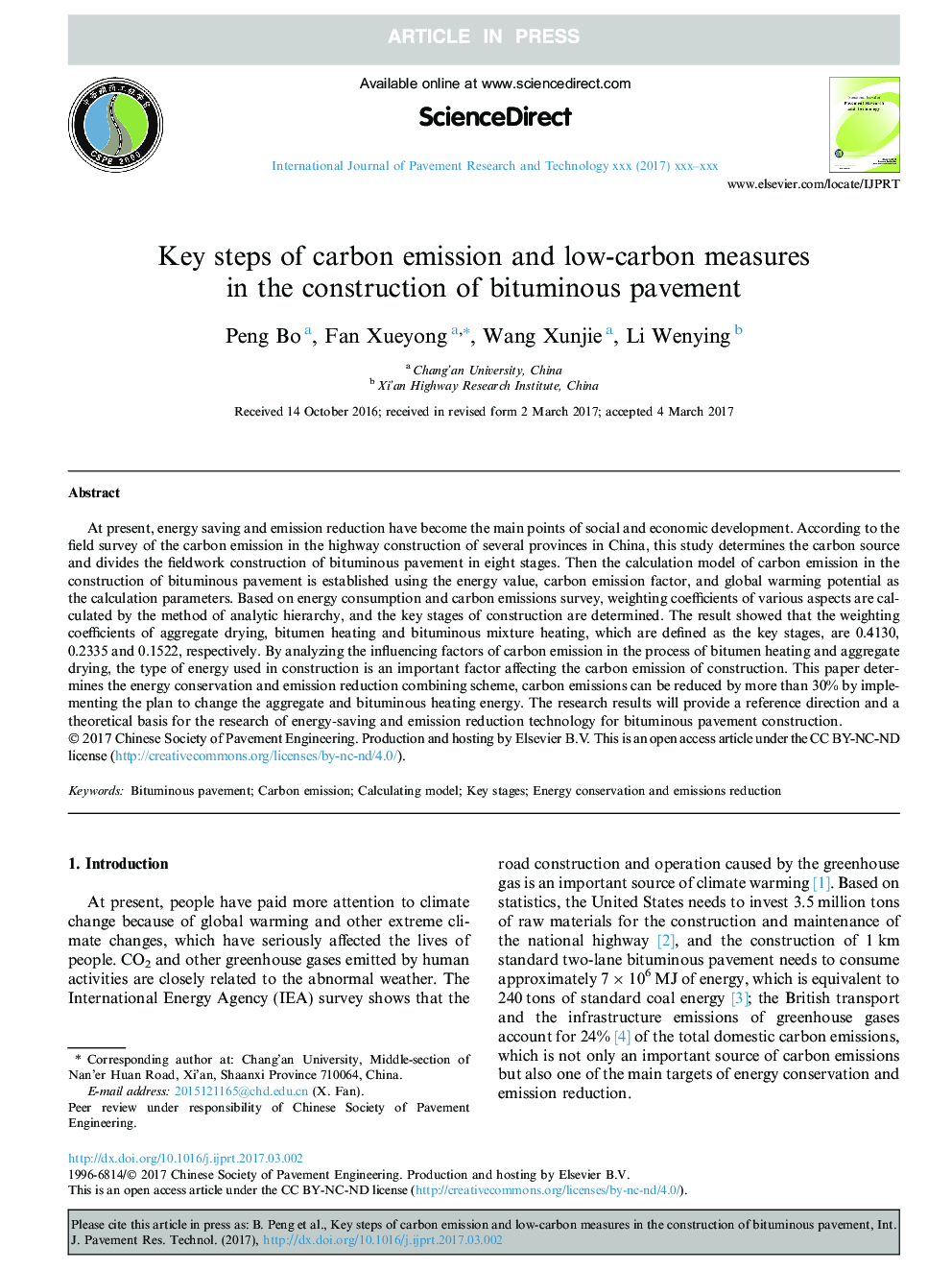| Article ID | Journal | Published Year | Pages | File Type |
|---|---|---|---|---|
| 6747956 | International Journal of Pavement Research and Technology | 2017 | 12 Pages |
Abstract
At present, energy saving and emission reduction have become the main points of social and economic development. According to the field survey of the carbon emission in the highway construction of several provinces in China, this study determines the carbon source and divides the fieldwork construction of bituminous pavement in eight stages. Then the calculation model of carbon emission in the construction of bituminous pavement is established using the energy value, carbon emission factor, and global warming potential as the calculation parameters. Based on energy consumption and carbon emissions survey, weighting coefficients of various aspects are calculated by the method of analytic hierarchy, and the key stages of construction are determined. The result showed that the weighting coefficients of aggregate drying, bitumen heating and bituminous mixture heating, which are defined as the key stages, are 0.4130, 0.2335 and 0.1522, respectively. By analyzing the influencing factors of carbon emission in the process of bitumen heating and aggregate drying, the type of energy used in construction is an important factor affecting the carbon emission of construction. This paper determines the energy conservation and emission reduction combining scheme, carbon emissions can be reduced by more than 30% by implementing the plan to change the aggregate and bituminous heating energy. The research results will provide a reference direction and a theoretical basis for the research of energy-saving and emission reduction technology for bituminous pavement construction.
Keywords
Related Topics
Physical Sciences and Engineering
Engineering
Civil and Structural Engineering
Authors
Peng Bo, Fan Xueyong, Wang Xunjie, Li Wenying,
